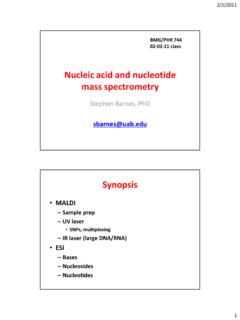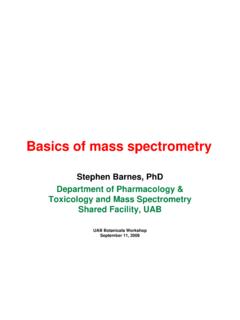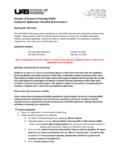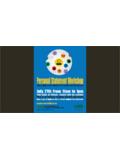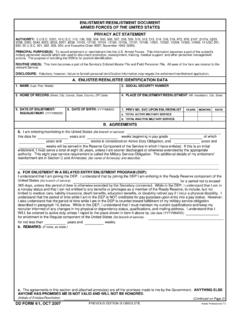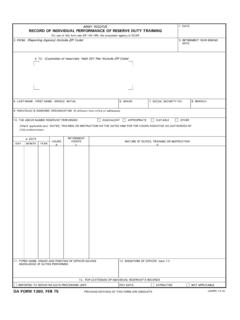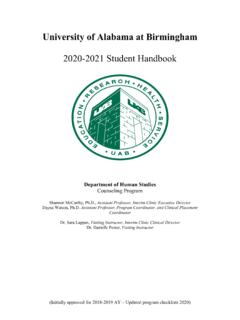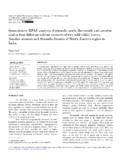Transcription of Review R eview of the methods used in the …
1 Journal of Chromatography B, 777 (2002) 3 28 . / locate / chromb Review Review of the methods used in the determination of phytoestrogens q a,b , Chao-Cheng Wang *, Jeevan K. Prasain a,b , Stephen Barnes a,b,c a Department of Pharmacology and Toxicology, University of Alabama at Birmingham, Birmingham, AL 35294, USA. b Purdue-UAB Botanicals Center for Dietary Supplements Research, University of Alabama at Birmingham, Birmingham, AL 35294, USA. c Comprehensive Cancer Center Mass Spectrometry Shared Facility, University of Alabama at Birmingham, Birmingham, AL 35294, USA. Abstract Interest in analytical methods for plant estrogens (phytoestrogens) has risen sharply in the past 10 years.
2 In this Review , we examine the existing analytical methods based on separations by gas liquid chromatography, high-performance liquid chromatography and capillary electrophoresis in addition to methods of detection by ultraviolet absorption, fluorescence, electrochemical oxidation / reduction and mass spectrometry. These methods are compared with other methods of phytoestrogen analysis utilizing immunoassay approaches. The advantages and disadvantages of each of these methods are highlighted and potential areas for further development identified. 2002 Elsevier Science All rights reserved.
3 Keywords: Reviews; Phytoestrogens Contents 1. Introduction .. 4. Chemistry of 4. Analytical methods .. 5. 2. Chromatographic methods .. 5. Gas chromatography mass spectrometry .. 8. High-performance liquid chromatography .. 10. UV 11. Fluorescence 12. Electrochemical detection .. 12. Mass spectrometry .. 13. q A wide range of units of mass (as g and mol) and concentration (as ppm, g / l and mol / l) have been used in the papers that are the subjects of this Review . Accordingly, the units as quoted in each paper are given in the text of this article with corresponding alternative units to assist in data comparisons.
4 *Corresponding author. Department of Pharmacology and Toxicology, Room 606, Kaul Human Genetics Building, University of Alabama at Birmingham, 1530 3rd Avenue South, Birmingham, AL 35294, USA. Tel.: 11-205-934-3410; fax: 11-205-934-6944. E-mail address: ( Wang). 1570-0232 / 02 / $ see front matter 2002 Elsevier Science All rights reserved. PII: S1570-0232( 02 )00341-0. 4 Wang et al. / J. Chromatogr. B 777 (2002) 3 28 . Capillary electrophoresis .. 17. UV 17. Fluorescence 18. Electrochemical detection .. 18. Mass spectrometry .. 18. 3. Non-chromatographic methods .. 19. UV and IR spectroscopy.
5 19. MALDI-TOF-MS .. 20. Immunoassays .. 20. Radioimmunoassay .. 20. Enzyme-linked immunosorbent assay .. 22. Time-resolved fluoroimmunoassay .. 22. 4. 22. 5. 25. Acknowledgements .. 25. References .. 26. 1. Introduction in terms of sensitivity, specificity and their advan- tages and limitations is listed in Table 1. Phytoestrogens are members of classes of poly- phenolic compounds synthesized by plants. They Chemistry of phytoestrogens include isoflavones and other flavonoids, lignans, coumestanes, stilbenes and zearalenones. Over the Phytoestrogens are found in plants and in many past 15 years there has been a dramatic increase in food products as glycosidic conjugates.
6 In fermented the number of papers published annually on phytoes- foods, they are deconjugated to their aglycones. In trogens, rising from five in 1985 to over 700 in 2000. soybeans, the predominant glycosidic conjugate is The reason for this rapidly rising interest has been the 60-O-malonyl-b-glucoside at the 7-position of the the association of many phytoestrogens and other isoflavones (Fig. 1A). This conjugate undergoes members of the polyphenol family with specific decarboxylation to 60-O-acetyl-b-glucoside (Fig. 1B). diseases or toxicity-related issues [1,2]. This in turn or hydrolysis to the b-glucoside (Fig.)
7 1C) during has necessitated the development of new methods for preparation of soy foods [5]. The 7-O-glucosyl- the analysis and quantitative measurement of glucoside of genistein (5,7,49-trihydroxyisoflavone). phytoestrogens. is present in the tubers of Apios americana, a long In 1985, the principal method for the analysis of time staple of the Eastern Native American [6]. phytoestrogens (and other polyphenols) was gas However, the structure of this diglucoside of genis- chromatography (GC). Because of the lengthy pro- tein has not yet been determined. C-Glycosides are cedure for purifying plant or physiological samples also found, such as puerarin, 8-glucosyldaidzein prior to analysis , investigators used 13 C- or 2 H- (Fig.
8 1D). The common isoflavones genistein and isotopically labeled phytoestrogens to correct for daidzein are also found as the 49-methyl ethers work up losses. This approach also required the use biochanin A and formononetin, respectively (Fig. of a mass spectrometer coupled to the GC instrument 2A). A 6-methyl ether of 6,7,49-trihydroxyisoflavone (GC MS) as well as chemical derivatization of the (glycitein) is present in soybeans (Fig. 2A). Equol phytoestrogens. We have previously outlined the (Fig. 2B) and O-desmethylangolensin (Fig. 2C) are advantages and limitations of this method [3,4].
9 Common metabolites of daidzein and formononetin. In this present Review , we compare and contrast Lignans are polyphenolic compounds linked by a the analytical methods currently available to inves- four-carbon bridge. Flaxseed is particularly enriched tigators for the analysis of phytoestrogens and their in the lignans matairesinol (Fig. 3A) and sec- metabolites. A general comparison of these methods oisolariciresinol (Fig. 3B) and these are converted by Wang et al. / J. Chromatogr. B 777 (2002) 3 28 5. Table 1. Comparison of analytical methods for analysis of phytoestrogens Technique Sensitivity Specificity Pros Cons GC MS 50 fmol High High resolution Complex work up Good for unknowns Difficult chemistry HPLC.
10 UV (and DAD) 2 pmol Moderate, Good for soy food and conjugates Low sensitivity better with DAD Less specific Fluorescence 200 fmol Good Sensitive Limited to fluorescent analytes ED (and array) 20 fmol Better with detection array Suitable for biological samples Cannot determine novel compounds MS 1 500 fmol High Ease of use and sensitive Limited chromatographic resolution CE. UV (DAD) 50 fmol Moderate, High separation resolution Limited injected sample volume better with DAD Excellence mass sensitivity Poor concentration sensitivity Fluorescence 1 5 fmol Moderate Sensitive Limited fluorescent analytes ED 1 2 fmol Moderate Sensitive Limited specificity MS 100 amol High Sensitive Difficult interface Low resolution UV and IR spectroscopy NA Fair High throughput Lack of specificity MALDI-MS 100 fmol High High throughput Lack of quantitation Immunoassay 1 100 fmol Good High throughput Cross reactivity bacteria in the mammalian gastrointestinal tract to the microflora of the large bowel in
